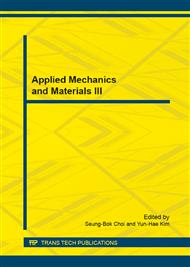p.104
p.113
p.120
p.125
p.131
p.136
p.140
p.145
p.150
Experimental Investigation of Solid Attitude Control System Using Proportional Pintle Thrusters
Abstract:
In order to investigate the characteristics of solid attitude control system (SACS) using proportional pintle thrusters, an ACS comprised of dual collaborative thrusters was designed and studied by theory and cold-flow test. Experiments were conducted to ascertain thrust variation at different pintle locations. With the purpose of studying thrust control principle, the thrust, chamber pressure and pintle displacement of two thrusters were measured, which worked differentially in the process. Results show that a nearly linear relationship is found between the thrust and valve pintle position and the two thrusters can work synchronous to produce a resultant force, whose direction and value can vary continuously. Besides, collaborative work mode of dual thrusters is conducive to the stabilization of chamber pressure which is beneficial to the choice of propellant.
Info:
Periodical:
Pages:
131-135
Citation:
Online since:
January 2015
Authors:
Price:
Сopyright:
© 2015 Trans Tech Publications Ltd. All Rights Reserved
Share:
Citation:


